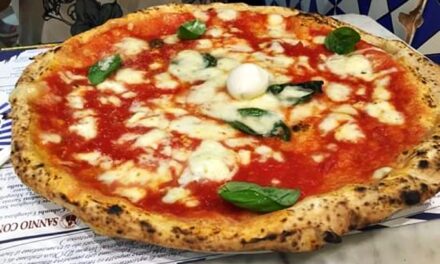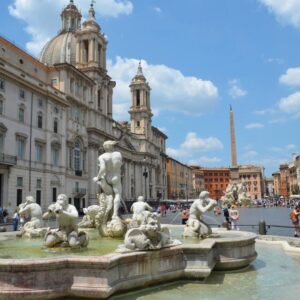Tempting taste of Polish Pierogi
Who can resist simplicity and tenderness of famous pierogi dumplings, specially when eaten in Krakow where the peak of Polish culinary tradition interlaces with cultural heritage in a brilliant explosion of flavors…
Throughout food history, it was so clear that simplicity combined with fresh ingredients provide a perfect formula for a dish to reach eternal glory. First ones appeared in Italy, like pizza and Florentine lapredotto sandwich. However, a special one, started to emerge on an Eastern Europe culinary map after the WWII. Sometimes underrated and, off the beaten food paths of Europe, Polish cuisine shows incredible potential to be discovered and explored with all its hidden secrets. One that stands as a food national shrine, keeping Polish heritage and spirit all around the world are pierogi. This unique dish fits as a starter, main dish and even desert, making it all around unbeatable food delicacy. What can be more tempting than a simple combination of a boiled dumpling filled with potatoes and cottage cheese, with some buttered onions and lard over it. However, story that brought us this culinary delight is a bit longer, discovering how pierogi became part of Polish history, legends and culture. There is no better way to experience this tasty topic then attending fascinating Polish pierogi dumplings cooking class.
Origin of “feast” dumplings

Tasty pierogi on the plate covered with onions and parsley
When saying pierogi we already mean plural or more than one dumpling, so no need to add any extra “s” at the end of this famous name. If we try to trace the origin of the word pierogi, it becomes tricky and we mostly rely on old Slavic word “pir” which means a feast. Probably that is why we can see pierogi within every single feast in Poland. We can easily trace first appearance of any type of dumplings coming from the far East. Maybe even Marco Polo helped with pierogi transfer when they reached territory of todays Ukraine and Poland. First steps in pierogi making can be found in the XIII century when Dominican priest Hyacinth of Poland connected monastic orders of Kiev and Krakow. This enabled tradition of pierogi to grow in its importance, specially in time of Tatar invasion, when pierogi, as a “food for the poor” saved Polish nation. First pierogi recipe ever found, comes from 1682. Compendium Ferculorum cookbook written by famous Polish chef Stanislaw Czerniecki. He was focused on pierogi filled with chopped veal kidneys, which was something to expect, since in that time, there was no chance to waste any kind of meat.
Modern tale of pierogi
Modern tale of pierogi is strongly connected with pre war Polish population, living in the Red Ruthenia region, which today belongs to western Ukraine. Pierogi making in that area was a signature of local Poles, until after WWII. They were forced to leave newly formed Soviet territory, so pierogi came with them and name pierogi ruskie was born. This type has nothing to do with Russia, and becomes the favorite one nationwide. Poles simply adore soft, full flavored pierogi ruskie, filled with potatoes and quark cheese, covered with melted butter with onions, to satisfy all your senses. That was just a trigger for the new chapter of pierogi history, with greatest diversity of fillings, size, and the way of serving. Similar influence reached majority of Central Europe with tender dumplings eaten on a daily basis. We’ll try to bring you a part of this story through unique Polish pierogi dumplings cooking class.
Traditional pierogi in Goscinna Chata restaurant

Medieval setting for pierogi cooking class in Goscilna Chata Restaurant, Krakow
Jonnie with our Chef in Goscilna Chata Restaurant i(up left)

To recreate all the tales and feel the real flavor of pierogi, I always prefer one super traditional restaurant called Goscinna Chata, located just off the main square of Krakow in a charming Slawkowska Street No.10. It is not about ordering pierogi as a restaurant guest, but attending traditional pierogi cooking class to truly discover the soul of this iconic Polish dish. Interior of Goscinna Chata promises enough, with traditional folk motives and decoration that transfers each guest through time.
Pierogi Cooking class – demonstration
In September 2019. everything was arranged for my US friends and me to dive into pierogi world. We entered subterranean room with old brick vaults, long wooden dining table, and plenty of space for our own pierogi to be made. After a few short stories on pierogi history from our master chef, fully equipped with culinary clothes and hats, we were ready to start.

Team is ready to start pierogi adventure
Pierogi dough was already there…
… rested for 15/20min and made of:
4 1/2 cups of flour,
2 teaspoons of salt,
1 1/2 cup of warm water,
2 tablespoons of melted butter,
2 eggs,
1 egg yolk,
2 tablespoons of oil
2 cups of sour cream.
Pierogi cooking class – preparation
After a brief demonstration on how to make pierogi dough circles and fill them, we were so excited to start flouring our table surface. We passionately rolled out dough, and used glass to cut off circles, thin enough to work with, but not too thin so it tears. Smells of different fillings were spreading around. Wooden traditional bowl with mushrooms and meet filling was set. Than another with classic ruskie potatoes and cheese, and finally the one with sauerkraut were ready to be used. It was easy to spoon chosen filling in the center of a circle dough, folding it over to make semi circle and finally press it with fingers or a fork to seal the edges.

Pierogi making process
Minute after minute this real, interactive cooking class involved each one of us. Funny commentaries were all around, while our pierogi were multiplying rapidly. Team work always wins and after a while we had enough pierogi to feed the army. Two large pots of salted boiling water were set by our master chef, and one by one pierogi were diving into their final phase. Seeing them floating on the top means they are ready with the best texture you can imagine.
… dish to reach eternal glory!
Pierogi traditional feast
Meanwhile, the whole group sat along the big medieval type of table, admiring what our hosts prepared for us. It was simply an edible tradition of Poland set on the table. Cold cuts of all kinds, lard, pickled vegetables, homemade bread, white and red wine, ice cold Zywiec beer and first bites were on the way. And then our masterpiece pierogi started to arrive, plate after plate. Like an endless culinary train that made us all proud. Our own delicious pierogi and the feast like in good old times was at its peak. Chatting on pierogi tradition was the main topic. This time we cooked our pierogi, but please try sometimes to bake them or even fry them for some nice crispy bites. We enjoyed discovering how Poles love to serve sauerkraut and forest mushroom pierogi for Christmas, how kids enjoy sweet pierogi filled with apricots, blueberries or apples and covered with powder sugar and butter. We learned how truly popular pierogi ruskie are and how new, modern types for pierogi are coming up, filled with herring fish or veggie options with asparagus, beans and broccoli mixed with good local cheese.

Traditional Polsih pierogi feast with superb US friends
My fellow North Americans proved how pierogi influence is spread all over USA and Canada. Even across the ocean, famous pierogi race is organized by Pittsburg Pirates baseball team during their games. Gigantic 25ft and 6000 pounds statue of pierog on a fork in Glandon, Alberta, Canada is set to celebrate this delicacy, while the largest, 92 pound edible pierog was made in Whiting, Indiana. The whole world seems to be caught by the spell of delicious pierogi. Atmosphere at our table was more like a big Polish family having their traditional lunch, but slowly, our stomachs were at the limit. It was tough to say final goodbye to our superb feast table, our hosts and pierogi tale in the heart of Krakow.
Walking across the main square I was thinking of how simplicity of food, formerly prepared by peasants and poor, can reach the level of uniting people around the globe. Somehow, with pierogi on a plate, even royal beauty of Krakow starts to look more impressive. Until we meet again, my dear Polish pierogi…

Jonnie and his crew are so proud of their pierogi
Article photos are made by Jonnie World Walker team















